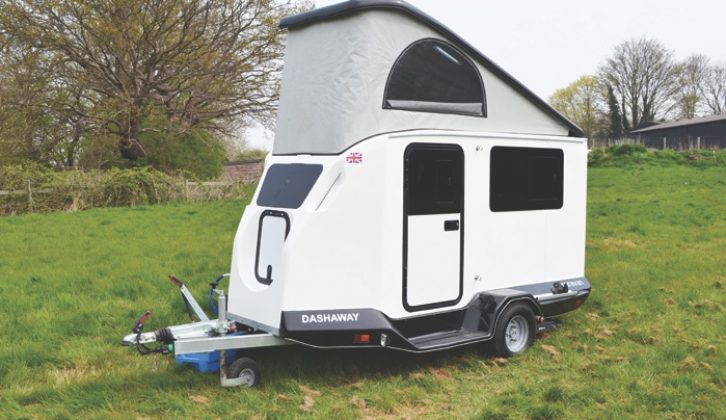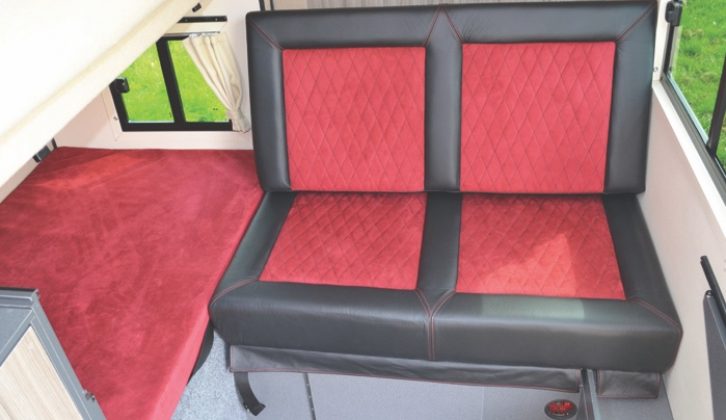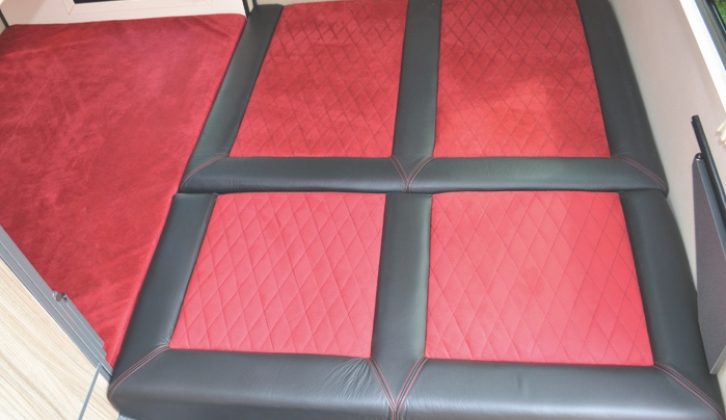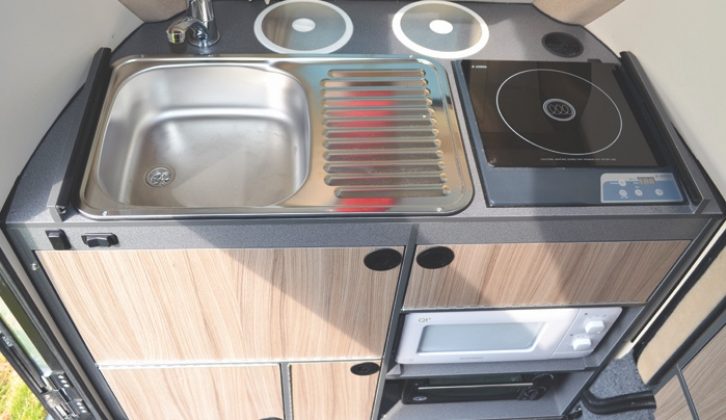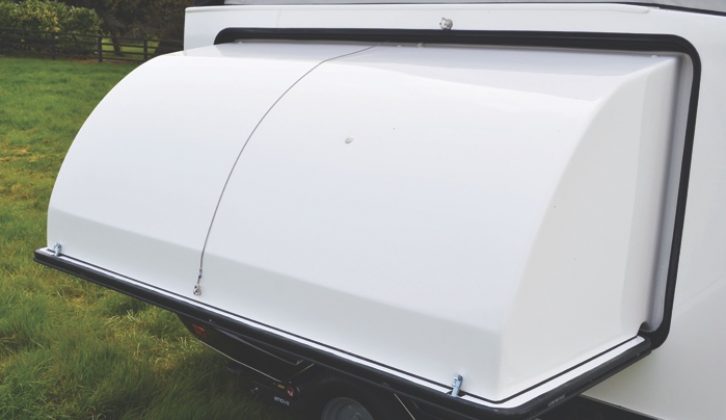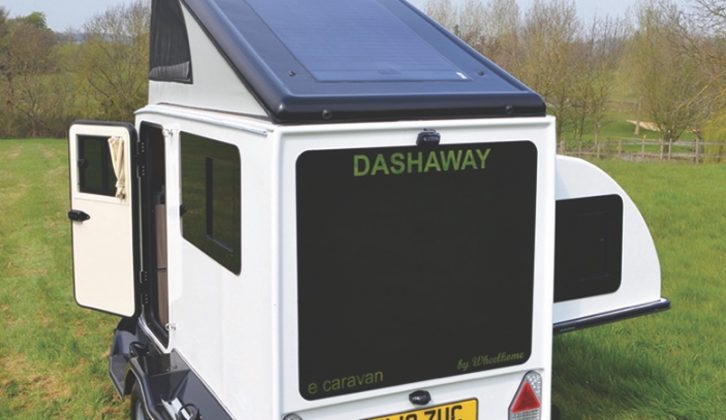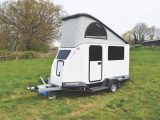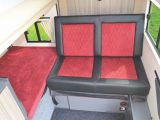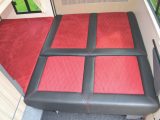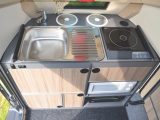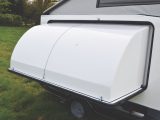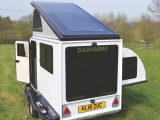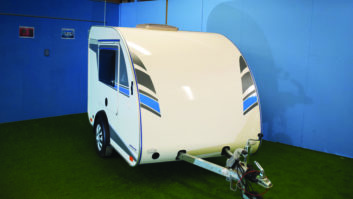Verdict
For anyone struggling to manage towing a ‘normal’ caravan, the Dashaway could be a boon. You might think the £23,000+ price is a bit steep, but consider how innovative this van is and what it has as standard (even if that’s not a heater) and you could change your view.
Pros
Innovative design
Light weight
Cons
No heating
Limited lighting options
Do you ever wish life were simpler? As you get older, do you ever wish that you could hitch up a caravan that didn’t require too much tugging about, that you didn’t need a gas-guzzling car to tow it, that you didn’t need towing mirrors, or that you could park your van in your garage? Well, now you can.
The Dashaway – which comes with a Motor Mover, an inverter and a 190W solar panel – is from Essex-based company Wheelhome. It’s a new mini-caravan with a shipping length of only 4m, an on-the-road width of 1.24m (narrower than many cars), an overall height of 1.84m and a MiRO of just 720kg. Its designer, Stephen Wheeler, has so far towed it with a Ford Fiesta, a Suzuki Swift, and a Golf GTE. A reversing camera is an optional extra.
In case you think that height and width sound just too small, the Dashaway has an electric raising roof and a side pod that rolls out electronically to create living space. Steven has even patented a name for this – the Podrant.
The privacy-glass window on the Podrant in our test model is a £388 extra, while the optional back panel costs £165.
So, at £23,825, does this IVA-compliant caravan make sense?
There's an electric raising roof and a side pod that rolls out to create extra space
Pitching & Setting-up
Being so light and having a reversing camera, the Dashaway is easy to manoeuvre. We didn’t even use the Motor Mover.
The van comes with a standard Al-Ko chassis so most caravanners should be familiar with its mechanisms. You can store the cable connection in an alignment tool on the A-frame.
Our test model was fitted with the two optional £225 bike racks that sit either side of the van on wide running boards. Having bikes positioned here is meant to be better for stability. The chassis is reinforced to take them, and you get a ratchet strap. With the bikes’ handlebars and pedals folded in, the overall width is still less than the width of our tow car.
The raising roof and Podrant are both operated from switches near the door. Although a steel cable pulls the Podrant out, once in position it is held entirely by seals and grips in the monocoque shell.
A portable fresh- and waste-water tank have their own stowage positions en route and, once you’re set up, live under the offside front corner, where, along with the usual Whale fresh-water connection, there is a retractable hose for the waste water. The electric hook-up is here too, but, given the proper psion wave inverter (also in here) and the powerful batteries, you may not need it.
You have to lower the roof before you retract the Podrant, but as it’s electronically operated you can stop it halfway to push in any bulges in the roof fabric.
Living
You move the backrest down from its travelling position to make the comfortable rear bench. It is done up in real leather and suede that comes in a cross-stitched pattern and a choice of colours.
The sink and hob covers in the kitchen double up as two tables with their own slots either side of the bench. The one on the offside can be moved between two positions, either in front of the main bench or over the bed section in the Podrant where, being close to two mains sockets, it can serve as a handy resting point for a kettle.
So far so good. But one drawback to this lounge – possibly to the whole caravan – is that it has no heating, either for air or water. And while the small windows let in a surprising amount of daylight, there is only one large strip light in the ceiling.
Kitchen
Space, of course, is very tight but you still get a decent sink, a single induction hob (hence the need for the psion wave inverter) and a Daewoo microwave. Our test model also had the £45 optional Quest combined oven and grill. The top-loading Waeco compressor fridge is included in a unit within the Podrant but mounted on a pivot so it stays level while the Podrant moves. An electro-magnet holds it in place while the Podrant is in the down position. There is storage space to the right of it.
Two fairly small shelves are also available, but a real plus point is the two bins at the front of the van. One of these is a waste bin, the other is for laundry. Both can be unloaded via an access flap at the front.
Washroom
You only have the cold-water sink to use for washing, but the cupboard at the bottom of the kitchen does house a Porta Potti (£138 extra). Even with the bed in position, there is room to use it.
Beds
The backrest can be positioned just as easily for the bed as for the seat. You end up with a flat, comfortable mattress extending 6ft 5in into the Podrant. In another clever bit of innovation, the tables/kitchen tops can be repositioned to form two shelves that hand down from the Podrant ceiling and act as somewhere to leave your clothes overnight. There aren’t any spotlights but come the morning there’s enough space for one of you to sit up and make a cuppa.
Storage
Behind the bed seat there is a surprisingly large wardrobe with two hanging rails. A cabinet that drops down from the roof provides space for clothes that don’t need hanging. Then you can lift up the seat base to access an area for larger items around a supplied spare wheel. Despite the space, Wheelhome recommends you store the awning (a Kampa Air Pro 260) in your car.
Technical Specifications
| Berth | 2 |
| MiRO | 720 kg |
| Payload | 280 kg |
| MTPLM | 1000 kg |
| Shipping Length | 4.0 m |
| Width | 2.34 m |
